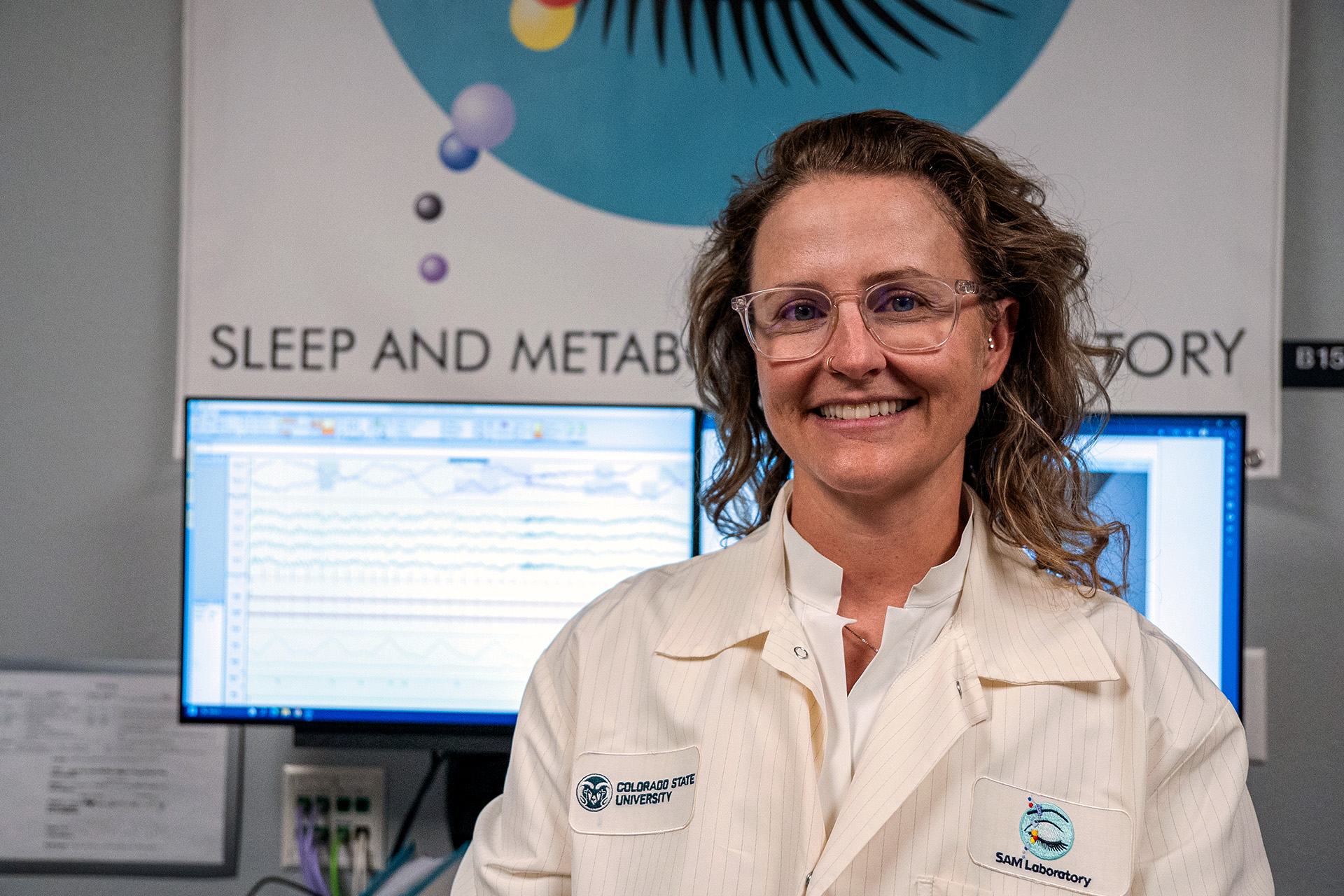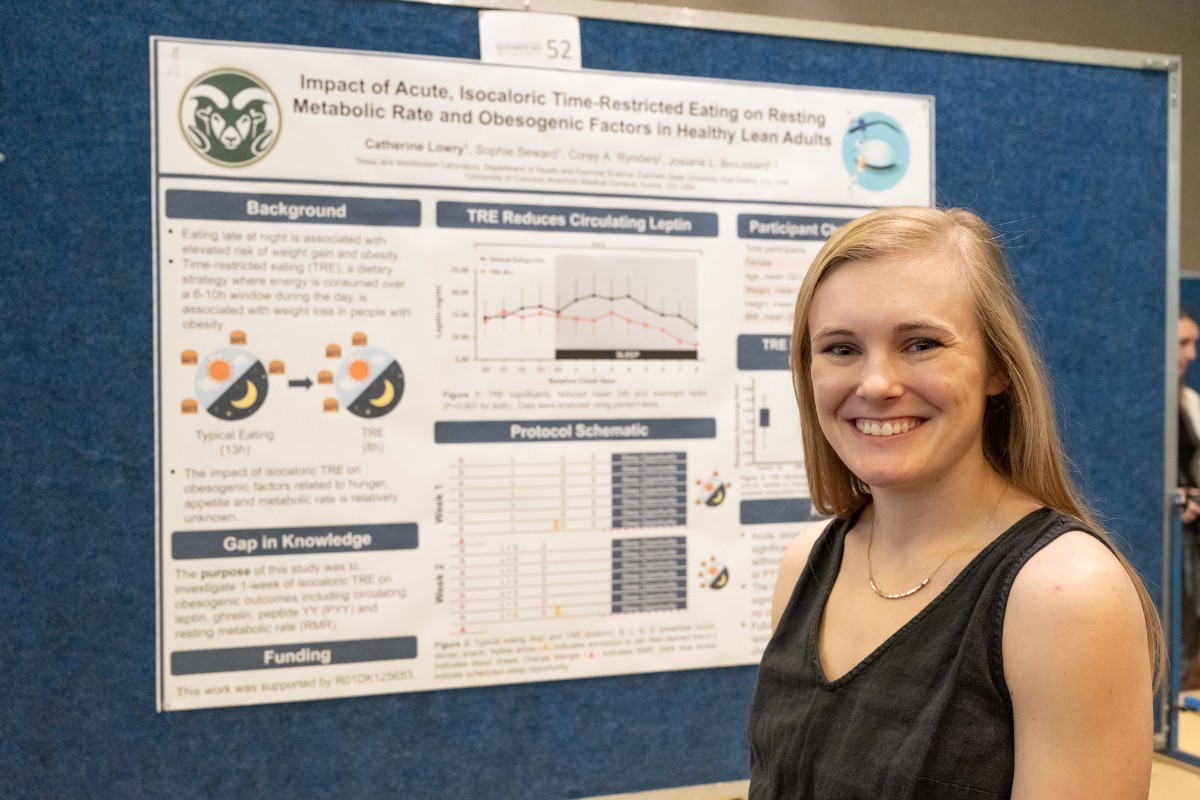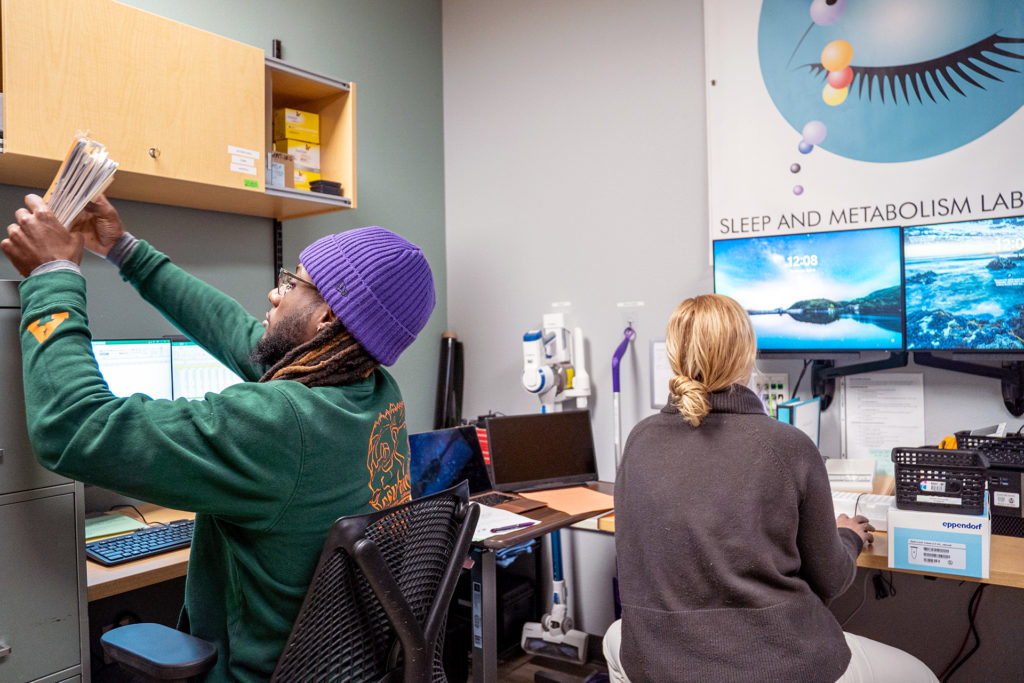
Time-restricted eating – a form of intermittent fasting and popular diet strategy – can lower glucose and hunger levels but may also leave people feeling less alert, according to a Colorado State University researcher.
Josiane Broussard, an assistant professor in health and exercise science in the College of Health and Human Sciences, has studied time-restricted eating (TRE) for the past half-decade.
TRE is an eating strategy which involves only consuming energy during certain hours of the day, but not necessarily reducing caloric intake. Studies have shown TRE may lower the risk of metabolic diseases such as diabetes.
“We had healthy young people eat normally for one week, and then we asked them to match the exact same food but restricted to an eight-hour window for another week,” said Broussard, the director of CSU’s Sleep and Metabolism Lab. “At the end of each week, we brought them in to sleep in the lab overnight, and every hour we measured things in their blood. We are starting to get a picture of what TRE does to factors in the blood like glucose, insulin and lipids.
“We saw that TRE lowered glucose and insulin levels, as well as some lipids that have been linked to metabolic diseases. But we also saw some unexpected outcomes.”

Alertness decreased
During the TRE week, people slept less, and reported being less alert compared to the non-TRE week. “We are following up on this very preliminary finding,” Broussard said.
Two posters from the same study were presented at CHHS Research Day by students from the SAM Lab — master’s student Catherine Lowry and Ph.D. student Sophie Seward.
Seward, who piloted the intervention on herself, said the most interesting finding to her involved subjective alertness and that this is one of the first studies to find objectively measured reductions in sleep duration during TRE.
For Lowry, it was the impact of TRE on fat utilization. “After one week of TRE, participants had higher rates of fat oxidation despite burning the same number of calories at rest as during typical eating,” she said. “After doing TRE for one week, more of the calories that participants were burning at rest came from fat as compared to when they ate for a longer period across the day.”
Broussard and her team also saw that the participants were not hungry in the morning. “If these results hold, it suggests you might lose fat if you adopt this behavior for the long run.”

Focus on circadian rhythm
Broussard’s lab also focuses on night shift workers, as well as people who do not get enough sleep or who sleep at unconventional times of day, which puts them at increased risk of obesity, diabetes, cardiovascular disease, cancer, stroke, and more.
“Sleep and circadian disruption increase the risk for most diseases,” Broussard said. “The lab is interested in two lines of research. One, why is disease risk increased and what are the mechanisms? Two, what can we do about it when we cannot avoid those behaviors?”
Broussard’s lab defines “late” eating as starting around two hours before habitual bedtime, when the sleep-associated hormone melatonin starts to rise. Other real-world studies have different definitions, and bedtimes differ.
Broussard’s suggested takeaways? “If you must sleep in the day, try not to eat overnight. As for exercise, the best time is the time you will exercise.” In other words, following your own motivation to exercise is more important than when you exercise.



Searching for night shift worker participants
Broussard’s team has submitted a grant to the National Institutes of Health to take the research to the real world to test TRE in third-shift employees. She said CSU’s connections to businesses in the community will help establish relationships to try to improve the health of shift workers in Fort Collins.
“Night shift workers are awake overnight and sleep in the day,” she said. “We certainly cannot change that. That is the nature of shift work.”
“But we also know that they are eating overnight. We may not be able to change their sleep schedule, but we could encourage them to limit eating at night, which may reduce the risk for diabetes and cardiovascular disease.”
The Department of Health and Exercise is part of CSU’s College of Health and Human Sciences.